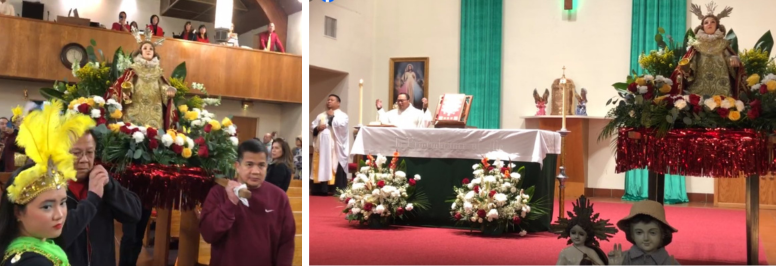The Santo Niño Festival is a popular Filipino celebration of the “Christ Child,” that is observed in our diocese and in parishes throughout the U.S. in January.
The Filipino community in the Diocese celebrated Santo Niño through a nine-day Novena and other festivities, which began in the middle of January and concluded on the Feast Day of Santo Niño, Jan 21.
St. Paul the Apostle Parish in Chino Hills honored the child Jesus on the Feast Day with a procession and Mass. During the procession there was a special performance by the Dalisay Filipino American Dance Company. The Filipino Ministry of St. Elizabeth Ann Seton, Ontario, also celebrated Santo Niño with a nine-day Novena beginning on Jan 4 and ending on Jan 12 with a procession and closing Mass on Jan 13. St. Mary Parish in Fontana, honored Santo Niño on Jan 20 with a special fiesta. For the first time, the Filipino Ministry of Our Lady of Lourdes Parish in Montclair hosted its first annual Santo Niño Novena and Festival. The parish held the nine-day Novena in the evenings and finished their celebrations with a Mass on Jan 20 where the community was encouraged to bring white fabric to wave during the dance, wear red, gold or white and to bring a personal Christ child image to be blessed.
The Basilica Minore del Santo Niño, in Cebú, a province of the Philippines, is the home of the original and oldest religious relic in the Philippines in honor of the Holy Child Jesus. According to the Basilica, Father Andres de Urdaneta, an explorer for the Spanish Empire, sailed to the Philippines in 1564. After arriving on the island, the Spaniards found a small statue of the Santo Niño in a recently burned down home, which they took as a sign to spread Christianity to the island. Since then, the Spaniards spread the devotion to the Santo Niño throughout the island and the Basilica has become a center of pilgrimages and symbol of faith of the Filipino people.


